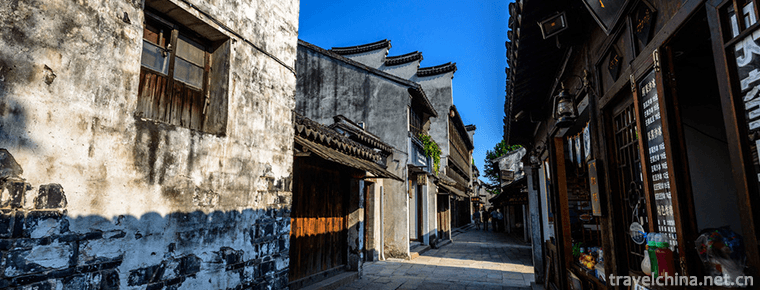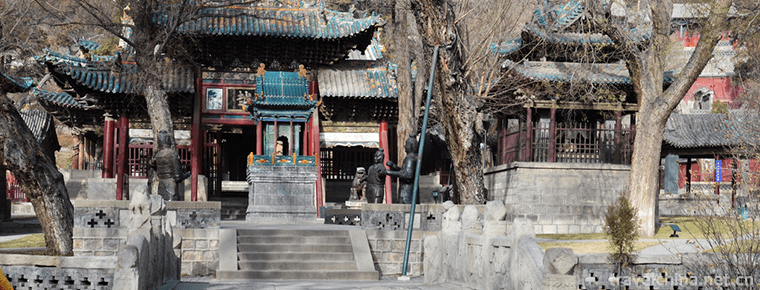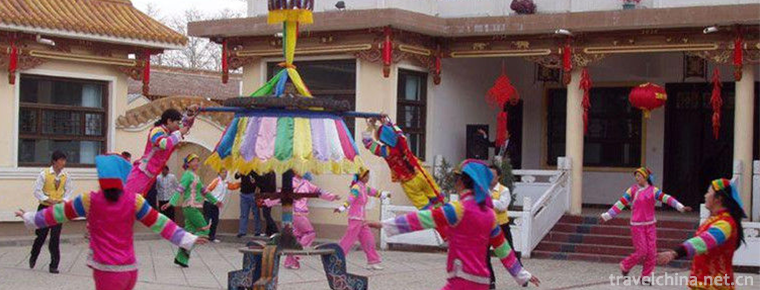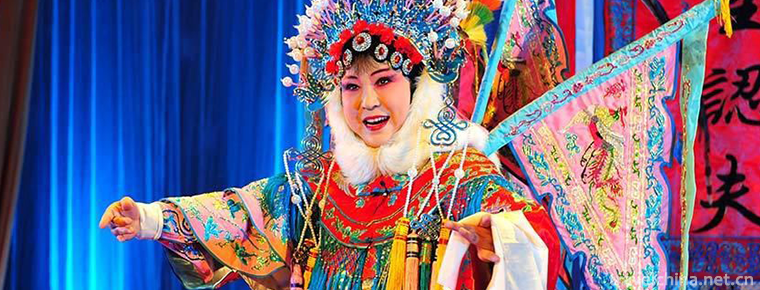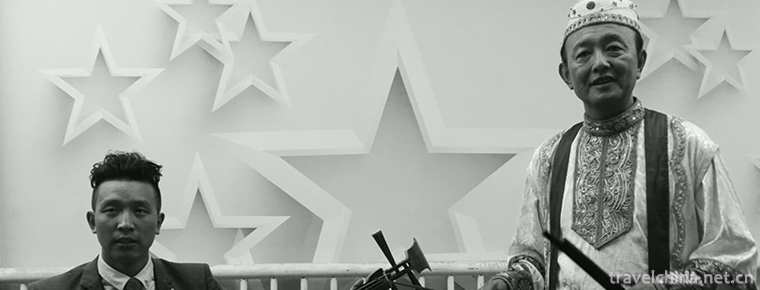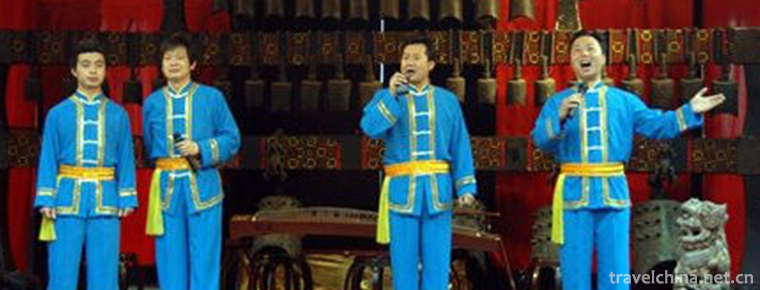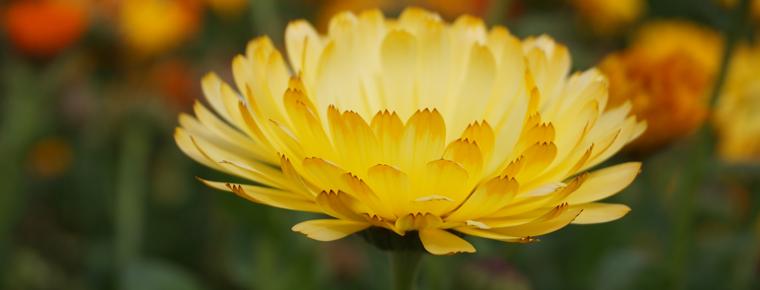Centipede dance
Centipede dance
Centipede dance, Guangdong traditional folk dance. Originated from Tongzhi in Qing Dynasty to Guangxu, it was initiated by Chen Chengjin, a native of Ximen, and Shi Wenyong, a good friend. It is a square dance of large animals. Once it was published, it has been popular and passed down to the present day. Now it is a traditional art exhibition project of Yonghe Garden of Ximen Community Residential Committee in Chenghai District, Shantou City.
In June 2008, the centipede dance declared by Chenghai District, Shantou City, Guangdong Province was listed in the second batch of national intangible cultural heritage list with the approval of the State Council.
historical origin
In Chaoshan Dance, the unique folk large square dance "centipede dance" was created by Chen Chengjin and Shi Wenyong in the Qing Dynasty. At that time, the Chenghai Goddess Tournament was very popular, and various parade programs appeared in competition. Chen Chengjin and Shi Wenyong, who are fond of folk dances, saw centipedes crawl and twist, which is very interesting, thus inspiring the creation of centipede dance. After a lot of careful research, the centipede body and a whole set of dance movements were designed and made for dancing. After continuous improvement and processing by later generations, it has become increasingly perfect. The whole length of Ximen centipede in Chenghai is 22 meters. It has three parts: head, body and tail.
The head is 1 metre long, the body is 18 metres long and the tail is 3 metres long. The head is composed of neck, nose and mouth, which resembles the "waking lion's head". There is a pair of sharp teeth on both sides of the mouth, two eyes set with transparent green lights, magnificent. The body is made of 28 pieces of hard and soft cloth frames, which are made of bamboo strips. Each section is 55 centimeters long and matched with two pairs, totaling 13 sections. The soft frame is only made of cloth, each section is 65 centimeters long, which is called "soft belly". In addition, it connects the first and last sections, totaling 15 sections. Dance flexibly and freely. The tail is scissors-shaped with two vines and covered with red silk. Head and body are painted with gorgeous colors. In addition to the main body, it is equipped with a spherical centipede bead.
artistic characteristics
Dance movements are designed to imitate centipede motions and movements. The centipede is an arthropod. The performers all dance in a semi-squatting position, using Wushu movements such as "double underneath Chang", "T-shaped horse", "single bow", "double bow", "single Qia", "Guanyin sitting lotus". When centipedes dance, they zigzag and zigzag, changing in thousands of ways, forming beautiful dancing gestures such as "3", "6", "8", "9", "water ripple", "four pillars of centipedes" and "plum blossom dots". At the same time, there are fast biting tail, turning stomach, spitting beads and other intense and difficult movements.
Beautiful dancing and bodybuilding martial arts are integrated, with great momentum and full of interest. The whole process of dancing is guided by colorful beads, and the whole centipede's eyes glisten. Thirteen sections of the waist were lit with candles, and a red tail rose high and swayed up and down. Plus fireworks to boost, beads habitually shoot. The climax is like a sunny sky, magnificent and pleasing to the eye. When performing, the accompaniments are often "Dragon Wagging Tail", "Out of Gate", "Flying Phoenix Title Book", "Liu Qingniang", "Underwater Fish", "White Character Blowing Drum" and folk minor.
The centipede dancer follows nature and forms a unique artistic form after several innovations. The performances were led by one person carrying beads, fifteen people holding centipedes, hiding under the belly of centipedes, bending down and bending legs, manipulating centipedes to wriggle and circle. It not only vividly imitates the shape and habits of centipedes, but also shows a strong, steady and magnificent atmosphere.
Current situation of inheritance
Centipede dance has a history of more than one hundred years. Through continuous evolution and improvement, it has special historical value in the study of Chaoshan traditional culture and folk worship. In terms of artistic value, centipede dance integrates music, dance and martial arts, with strong ornamental and spectacular scenes. As a messenger of cultural exchange, he has been invited to perform at home and abroad for many times. At the invitation of the Shantou Municipal Government in 1926, he performed in front of the Shantou Judicial Hall. In 1937, he went to Hong Kong to celebrate the coronation of King George VI and stirred up Xiangjiang. In 1987, he went to Guangzhou to attend 27 consecutive performances of the First Folk Art Joy Festival of Guangdong Province; in 2000, he participated in the 28th Major Cosmetic Parade of Singapore; in the same year, he won the 10th Square Dance Bronze Award of the Ministry of Culture.

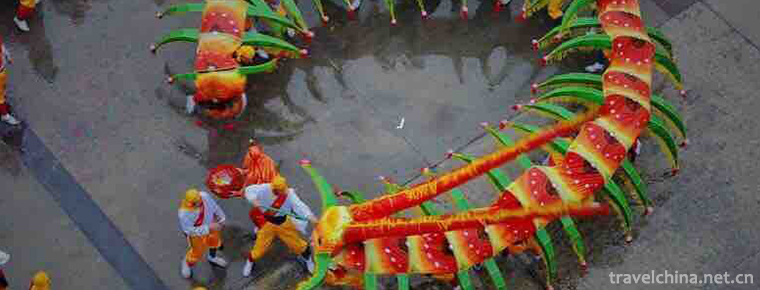
-
Nanxun ancient town Scenic Area
Nanxun Ancient Town is located in Nanxun District of Huzhou City, at the junction of Jiangsu, Zhejiang and Shanghai provinces. .
Views: 221 Time 2018-12-07 -
Jiulushan Waterfalls Scenic Spot
JiuRushan Waterfall Group Scenic Area - National AAAA Class Scenic Area and National Forest Park, located in Xiying Town, Jinan City, Shandong Province, is the source of Jinxiuchuan Reservoir.
Views: 205 Time 2018-12-22 -
Lijiang Heilongtan Scenic Area
Heilongtan (also known as Yuquan Park) was built in the second year of Qianlong (1737). It was restored in the sixty years of Qianlong and the eighteenth year of Guangxu. The old Yuquan Dragon King .
Views: 257 Time 2018-12-22 -
Fenghuangling Natural Scenic Park
Beijing Fenghuangling Natural Scenic Park is China's National AAAA Scenic Area. The scenic spot is located in the northwest of Haidian District, 51 kilometers away from Tiananmen straight line.
Views: 165 Time 2018-12-26 -
Jin Memorial Temple
Jinci Temple is located in Jinci Town, Jinyuan District, Taiyuan City, Shanxi Province. It was originally called Jinwang Temple and was first named Tang Shuyu Temple..
Views: 135 Time 2019-01-29 -
Yasuaki
Anzhao is an ancient Tu dance. It's popular with mutual aid. When celebrating festivals, harvest celebrations and weddings, people gather in the courtyard or on the wheat threshing ground to dance the.
Views: 186 Time 2019-04-02 -
Luo Juan Opera
Luojuan opera, commonly known as trumpet opera, is one of the local operas and one of the national intangible cultural heritages spread in Runan County of Henan Province and Dengzhou City of Henan Pro.
Views: 149 Time 2019-05-15 -
Wang Guo Festival
Wangguo Festival is a festival for Tibetan farmers to celebrate a bumper harvest. It is popular in Lhasa, Shigaze, Shannan and other places in Tibet Autonomous Region. The time is between July and Aug.
Views: 130 Time 2019-06-26 -
virtuous and filial
Xianxiao was born out of Buddhist folklore, and has a deep relationship with Xiliangle music, Dunhuang Bianwen and Hexi Baojuan. The way of inheritance mainly depends on the artistic population. Its c.
Views: 172 Time 2019-07-01 -
Xiushan Folk Song
Xiushan folk song is the folk song of Xiushan Tujia and Miao Autonomous County. Folk songs are closely related to the people's lives of all ethnic groups in Xiushan. Through compiling folk songs, the .
Views: 119 Time 2019-07-08 -
Chengdu Weiran flower sea
Weiran flower sea is the largest flower sightseeing base in Chengdu, the top 50 rural tourism base in Chengdu, the most beautiful flower appreciation base in Chengdu, Chengdu music industry base, top .
Views: 125 Time 2020-04-10 -
Guangan transportation
Located at the junction of Sichuan and Chongqing, Guang'an is an important passage from east Sichuan to Chongqing and southward and eastward. It is also an important node on the national "five vertical and seven horizontal" traffic trunk line.
Views: 339 Time 2020-12-19
